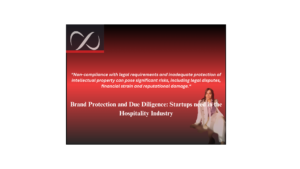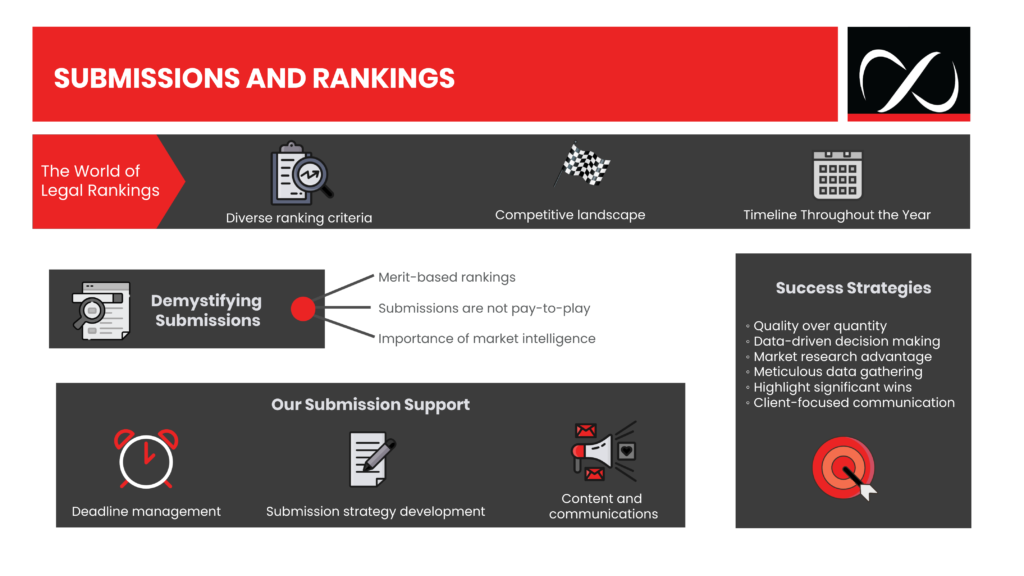
Fresh perspectives on traditional marketing, for a traditional sector, done unconventionally!

The legal sector is supported by over 10 widely acknowledged directories and over 25 rankings within this realm of directories. The rankings cater to practice areas by providing the reader a list of top law practices in each of those practice areas. The size of the top of the charts varies from ranking to ranking. In some rankings a large number of firms are announced winners. In some others there’s just one winner in each category. There’s a base level body of work basis which a practice may start submitting to anywhere between 5 to over 25 of these ranking submissions.
TYPES OF RECOGNITIONS: Apart from practice areas, there are winners also on the basis of criteria such as ‘young law firm/lawyer’, ‘fastest growing firm’, ‘woman lawyer of the year’, ‘dealmaker of the year’, ‘employer of choice’, ’30 under 30’ and ’40 under 40’, and then awards that are entirely based on client testimonials.
TIMELINE OF SUBMISSIONS: While some months demand more submissions, some others are lighter on submission deadlines, but every month in the year is active. The beginning of the year is pronounced by calls for 2-3 oldest marquee submissions such as Chambers & Partners, IFLR and Asia Law. But law practices need to stay alert almost evenly throughout the year for a chance to enter one or more of the sought after lists. For example, Legal500 – another gold standard in legal rankings – takes submissions around mid year. Asian Legal Business – the relatively new and upcoming product of Thomson Reuters, has quickly earned a lot of credibility in the submissions space, peppering almost the enter year with a calendar full of innovative submissions.
MYTHS AND FACT: It is a common misconception that a place on the charts can be bought, back door. The reality is that in an extremely competitive landscape for the submission directories, itself, none of them can afford to dilute their quality by giving in to questionable means. It is true that almost all of the directories come with a sales representative, who may reach out to law practices to sell page space for exclusive features, roundtables, interviews, authored articles and other varieties of profiling opportunities. These opportunities cost the practices a hefty sum, and may be negotiated.% If practices do not have enough of a body of work, and are still shelling out these sums for a profiling opportunity – then that disbalanced approach is unlikely to win them a spot in the rankings, just by default of paying for the profile. However, if an otherwise meritorious practice features both in the rankings as well as the profiling section of an edition of a directory – that, in itself, is no reason to raise alarm bells.
HOW TO GET RANKED: The rankings function through researchers who collate and study data acquired from lengthy responses, by law practices, to questions around significant mandates, clients, team additions, infrastructure innovations, past accolades, thought leadership and more. Nominations are free to all for some directories, while some directories require a nomination fee.
That said, how can a law practice tell if it is even worth submitting to a ranking or is it just going to be a waste of time in context of likelihood of winning? Our market researchers are able to give you that prediction. Our legal market intel extends, among other things, to trends in all the main law practice rankings.
NON-LEGAL RECOGNITIONS: Additionally, once a practice is a repeat A-lister in multiple legal directories, the recognition strategy benefits from opting for wider industry accolades around the strengths of innovation, workplace environment, CSR, start up excellence, among others. We help identify the ones that fit the practice budget and perception strategy.
OUR SERVICES








Copyright @2023 Lawfinity Solutions. All rights reserved. | Maintained by Ghostline Legal